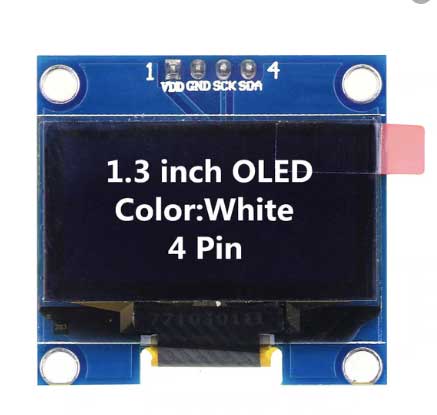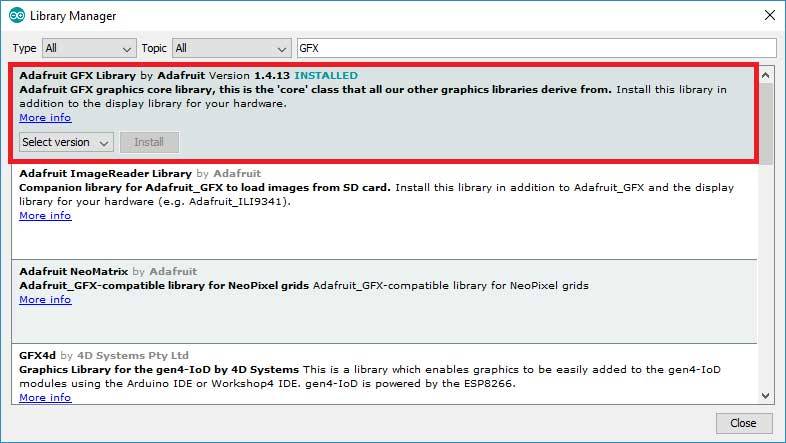Introduction to OLED Display
This article shows the way to use the SSD1306 0.96 inch I2C OLED display with the Arduino. We’ll show you some features of the OLED display, the way to connect it to the Arduino board, and the way to write down text, draw shapes and display bitmap images. Lastly, we’ll build a project example that displays temperature and humidity readings.

OLED (Organic Light-Emitting Diodes) may be a flat light emitting technology, made by placing a series of organic thin films between two conductors. When electrical current is applied, a bright light is emitted. OLEDs are emissive displays that don’t require a backlight then are thinner and more efficient than LCD displays (which do require a white backlight).
Pinout of OLED Display
Because the OLED display uses the I2C communication protocol, wiring is very simple. You just need to connect to the Arduino Uno I2C pins as shown in the table below.
| Pin | Wiring to Arduino |
| Vin | 5V |
| GND | GND |
| SCL | Any Analog Pin |
| SDA | Any Analog Pin |
Libraries
To control the OLED display you need the adafruit_SSD1306.h and the adafruit_GFX.h libraries. Follow the next instructions to install those libraries.
1. Open your Arduino IDE and go to Sketch > Include Library > Manage Libraries. The Library Manager should open.
2. Type “SSD1306” in the search box and install the SSD1306 library from Adafruit.
3. After installing the SSD1306 library from Adafruit, type “GFX” in the search box and install the library.
OLED’s APPLICATIONS
OLEDs are used to create digital displays in devices such as television screens, computer monitors, portable systems such as mobile phones, digital media players, car radios, digital cameras, car lighting, handheld games consoles, and PDAs. Such portable applications favor the high light output of OLEDs for readability in sunlight and their low power drain. Intense research has yielded OLEDs with remarkable color fidelity, device efficiencies, and operational stability.
According to the type of manufacture and the nature of their use, OLED’s.
1. Passive-matrix OLED (PMOLED).
2. Active-matrix OLED (AMOLED).
3. Transparent OLED.
4. Top-emitting OLED.
5. Foldable OLED.

